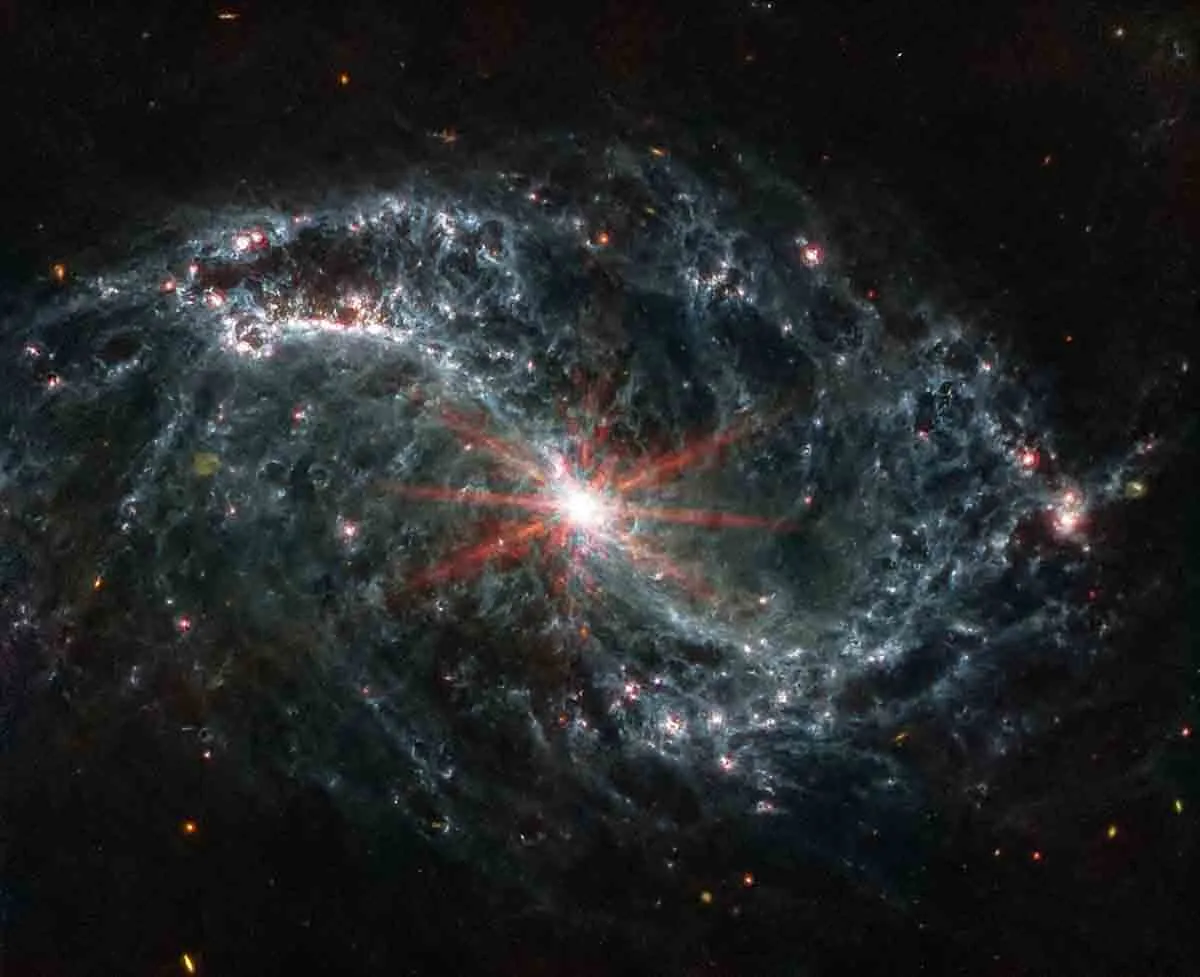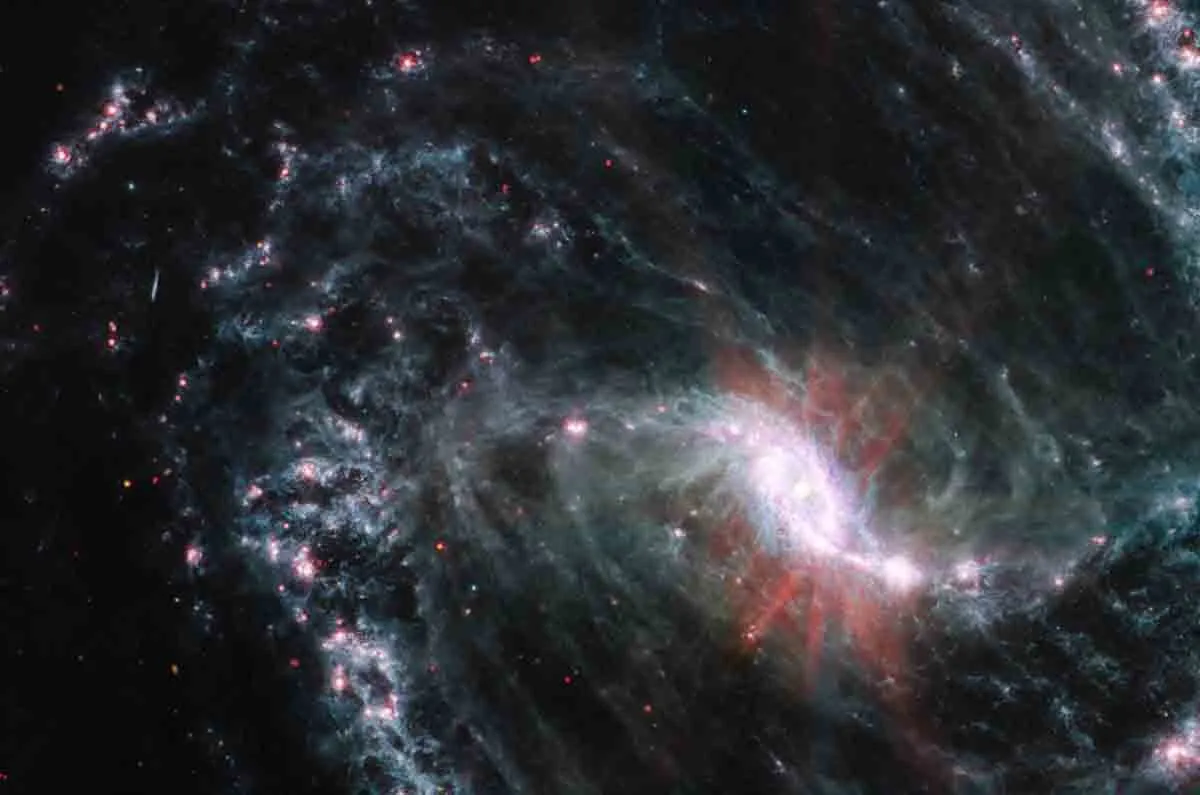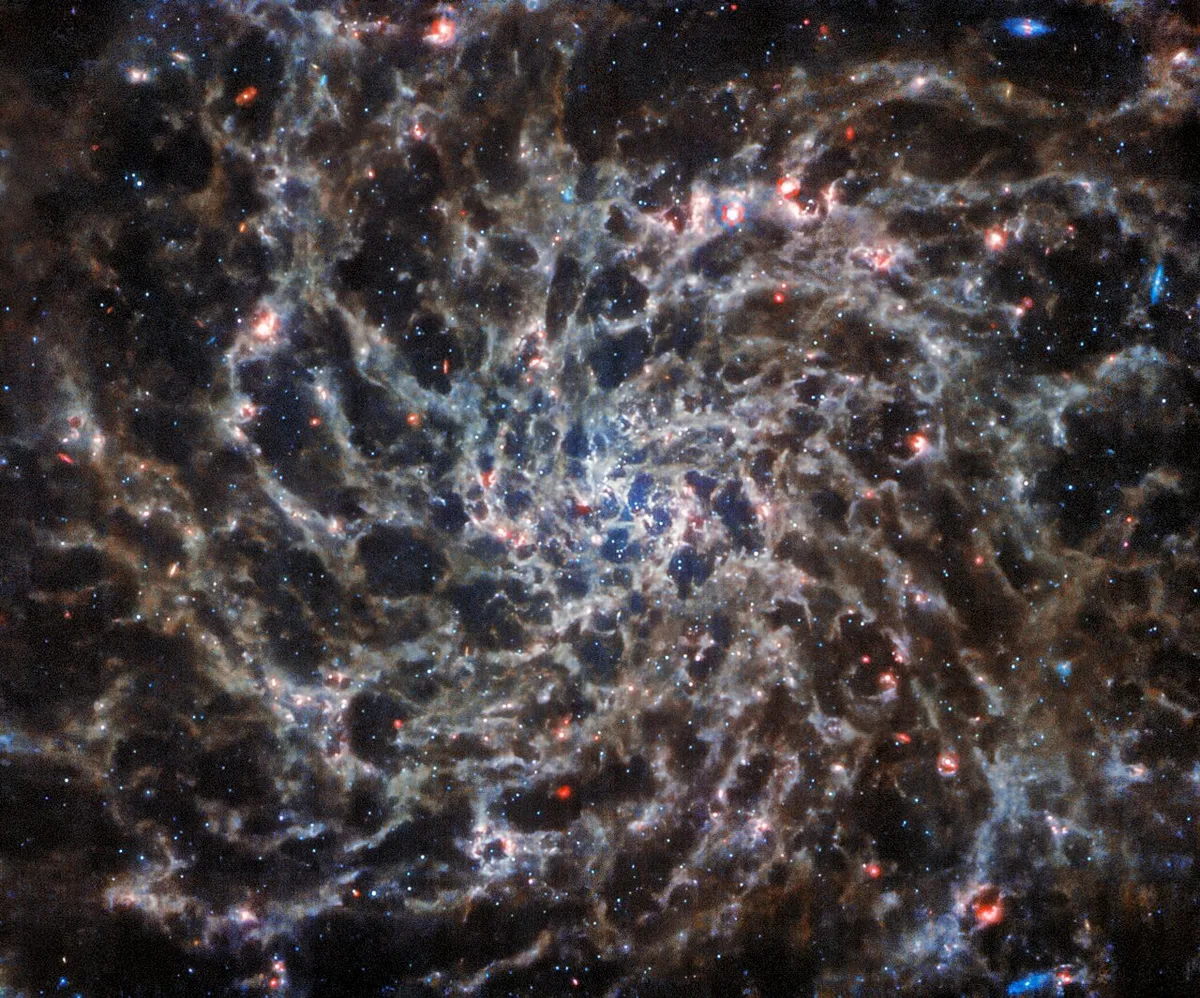New images from the James Webb Space Telescope reveal glowing cavities of dust and enormous bubbles of gas lining the spiral arms of nearby galaxies.
The images are part of a study of 19 different galaxies by astronomers using the Webb Telescope, in order to discover how the formation of new stars impacts the evolution of the huge galactic structures in which they reside.
See the latest James Webb Space Telescope images

The project - known as the Physics at High Angular resolution in Nearby Galaxies (PHANGS) collaboration, involves over 100 scientists working in an international collaboration.
It's led by Eva Schinnerer of the Max Planck Institute for Astronomy (MPIA) and principal investigator for the PHANGS collaboration
Webb observations are led by Janice Lee, Gemini Observatory chief scientist at NOIRLab from the University of Arizona.
So far, 5 of the 19 galaxy targets have been studied; namely M74, NGC 7496, IC 5332, NGC 1365, and NGC 1433.

The key to studying these galaxies in any kind of detail is being able to peer beyond their dense, obscuring interstellar dust and gas - the ingredients from which new stars are born - and get a good look at the internal structures and processes within.
The Webb Telescope, with its Mid-Infrared Instrument (MIRI), can do just that, observing beyond optical light and revealing structures that would normally be invisible to the human eye.

The observations reveal how both individual and overlapping shells and bubbles within the galaxies' spiral arms combine to produce the structured features seen in these images.
It is hoped that further study of these galaxies, and others targeted by the PHANGS project, will reveal insights into how galaxies form and develop over time.
The study may provide more clues as to how our Universe has evolved over the past 13.8 billion years.

Read more about this story at esawebb.org/news/weic2306
